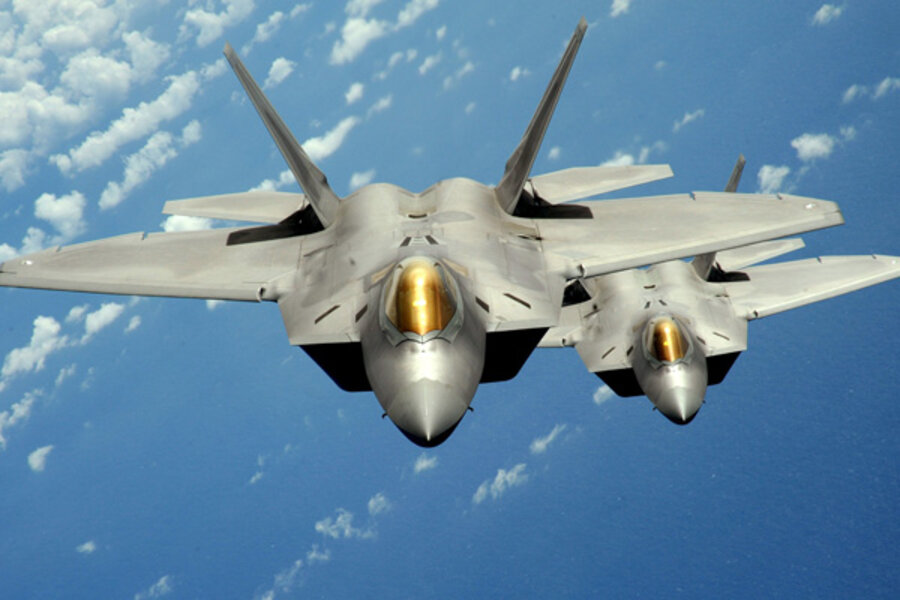US jets to Korea: Why send stealth fighters to the region?
Loading...
US stealth jets to South Korea to participate in joint drills with Seoul’s military: That’s Washington’s latest move in its continuing effort to deter conflict on the Korean Peninsula.
The top-line F-22 Raptors were deployed from Japan to Osan Air Base in South Korea, US officials confirmed on Sunday. They are following in the slipstream of B-2 stealth bombers, which dropped dummy bombs on a remote South Korean island during an exercise last week.
What’s the purpose of this latest US military move? After all, North Korea has been pretty belligerent of late. On Sunday, North Korean leader Kim Jong-un and other top officials adopted a declaration calling nuclear weapons “the nation’s life,” something they would not trade for “billions of dollars.” Pyongyang is already upset over the continuing US-South Korean military exercises.
How do the F-22s figure into this equation?
First, their presence is likely an effort to show the extent of the US commitment to South Korea’s defense. Exercises are meant to test the integration of particular forces into a joint fighting enterprise; this shows the United States would commit its most expensive jet fighters to a conventional Korean War, if Pyongyang decides to attack.
In that sense, the F-22s complement the appearance of the B-2s. The latter are long-range, nuclear-capable bombers based in the US. The message they sent with their dummy bombs was that Washington remains committed to protecting South Korea and Japan with its own nuclear weapons in the face of North Korea’s nuclear development.
“While the [B-2] operation was an exercise, the North undeniably must have been unsettled by this demonstration of long-range force projection by the United States,” writes Victor Cha, a Korea expert at the Center for Strategic and International Studies (CSIS), in an analysis.
Second, the F-22s may represent something of an attempt to educate the inexperienced Mr. Kim.
North Korea’s conventional artillery and missiles can threaten most of South Korea and parts of Japan, notes a Foreign Policy article by David Kang, a professor of international relations at the University of Southern California, and Mr. Cha of CSIS. Pyongyang could hit Seoul with half a million artillery rounds in the first hour of a conflict. Stability has held for decades in the face of this threat because North Korea’s leaders understood that if they pulled the trigger, the US military would defeat them and topple their regime.
Does Kim understand that context?
“The worry is that the new North Korean leader might not hold to the same logic, given his youth and inexperience,” write Mr. Kang and Cha.
Last, there is a practical aspect to the F-22 deployment – getting US pilots used to the structure and terrain of a region where they might be called upon to fly real missions.
In any war, US cruise missiles would probably take out North Korea’s air defenses with little trouble. Pyongyang’s geriatric Air Force constitutes little threat, notes David Cenciotti on his widely read blog “The Aviationist.”
F-22s would probably escort bombers to targets within North Korea, then hit targets of their own, according to Mr. Cenciotti.
“The F-22 can be tasked to escort bombers into an anti-access target area (a superfluous task when air superiority has been already achieved) and then perform an immediate restrike on the same target attacked by the B-2, B-52, or B-1 bombers being accompanied, or attack another nearby ground target, if needed,” Cenciotti writes.








